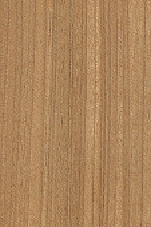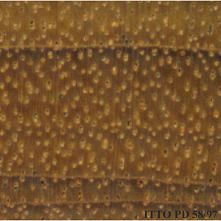
SURIAN BATU (Chukrasia tabularis)
Trade Name
Surian batu
Scientific Name
Chukrasia tabularis A. Juss.
Family
MELIACEAE
Common Names
Yinma; Vinma; Tawyinma; Sey barasi; Saiphra; Pabba; Mallei vepu; Main; Madagiri vembu; Lal devderi; Lal devadari; Kul hathuri; Kinthat-putgyi; Kaloti; Granti malle; Ganti malle; Eleutharay; Dalmara; Dal mara; Chikrassi; Chegarasi; Burma almondwood; Boga porna; Boga poma; Arrodah; Aglay; Agalai; Agal; Surian batu (Malaysia); Yeng-ma (Myanmar); Chittagong wood; Chickrassy (India); Repoh (Malaysia); Lat hoa (Vietnam); Suntang (Malaysia); Taw-yengma (Myanmar); Yom him (Thailand); Cherana puteh (Malaysia)
Description Of The Tree
Botanical Description
It is medium-sized, sometimes fairly large tree up to 30 m tall. The bole is branchless for up to 18 m, with a diameter of up to 110 cm, without buttresses.
Natural Habitat
Chukrasia is usually found scattered in lowland evergreen dipterocarp rainforests, moist evergreen or deciduous forests, from 300 to 800 m of altitude.
Natural Distribution
It is distributed in India, Myanmar, Indochina, and southwards to the Malay Peninsula and Borneo.
Plantations Available?
Plantations of this species are reported in Nigeria, Cameroon, South Africa, Puerto Rico and Costa Rica.
Wood Identification
Anatomic Description Of Wood
Wood diffuse porous. Tangential diameter of vessel lumina 100 micras or less (very small). Colored deposits in heartwood vessels. Vessels per mm2 5 to 20. Simple perforation plates. Vessel-ray pits similar to intervessel pits in size and shape. Intervessel pits Axial parenchyma in marginal or in seemingly marginal bands. Apotracheal axial parenchyma diffuse and/or diffuse in aggregates. Paratracheal axial parenchyma scanty and/or vasicentric. Over 9 cells per parenchyma strand. Body ray cells procumbent with mostly 2 to 4 rows of upright and/or square marginal cells (Kribs-II). Fibers with distinctly bordered pits.
-
 Wood Macro Photo Radial Plane
Wood Macro Photo Radial Plane
-
 Wood Micro Photo Of Transversal Section
Wood Micro Photo Of Transversal Section
Availability
Cites Status
Unrestricted
General Wood Description
Odor
Freshly cut wood has a fragrant odor, but dried wood has no characteristic odor or taste.
Color
The heartwood is pale reddish-brown, yellowish-red to red, darkening to dark yellowish-brown, reddish-brown to medium dark brown on exposure, sharply differentiated from lighter sapwood.
COLOR INDEX (1=Black, 7=Light yellow,white)
2
Grain
The grain is interlocked and sometimes wavy.
Texture
This species is reported to have a moderately fine texture.
Luster
Planed surfaces have a high lustrous satiny sheen.
Natural Durability
It is durable under cover but not in exposed condition and liable to termites attack.
Natural durability index (1= Very high durability, 7=Vey low durability)
4
Resistance To Impregnation
The wood is moderately resistant to extremely resistant to preservative treatment.
Wood Physical Properties
Basic Density or Specific Gravity (O.D. weight/vol. green) (g/cm³)
0.71
Air-dry Density (Weight and volume at 12%MC) (g/cm³)
0.81
Total shrinkage Tangential (Saturated to 0%MC) (%)
7.3
Total shrinkage Radial (Saturated to 0%MC) (%)
4.4
Drying Defects
Ease of Drying: Air seasoning is reported to be difficult. Air drying 4 cm thick boards from green to 15% moisture content takes about 5 months. Drying Defects: It is prone to end and surface checking and has a slight tendency to twist. Kiln Schedules: Schedule recommended for Burma Lancewood. A mild kiln schedule is recommended although some checking (sometimes severe) cannot be avoid. Kiln drying from green to 12% moisture content takes 5-6 days.
Recommended Dry Kiln Schedule
UK-E; US-T6-D2
Dimensional stability ratio (Total Tangential Shrinkage %/Total Radial Shrinkage %)
1.7
Wood Chemical Properties
Wood Mechanical Properties
Bending Strength (MOR),12%MC (kgf/cm²)
877
Stiffness (MOE) 12%MC (kgf/cm²)
122028
Compression parallel to fiber 12%MC (kgf/cm²)
512
Compression perpendicular to fiber 12%MC (kgf/cm²)
112
Shear strength radial 12%MC (kgf/cm²)
158
Janka hardness (side) 12%MC (kgf)
689
Janka hardness (end grain) 12%MC (kgf)
917
Workability
Sawing
Sawing of this species is reported to be rather difficult.
Rotary Veneer Cutting
This species can be used for lamination.
Sliced Veneer
This species can be used for lamination.
Blunting Effect
It has a slight dulling effect on the cutting elements.
Machining
Reports on machining operations are contradictory. Heavily interlocked material may pose difficulties.
Planing
Planing is reported to be easy, but interlocked material may pick up. A 20 degrees cutting angle is recommended.
Moulding
Some picking up of grain may occur on quarter-sawn material.
Turning
30
Boring
It is difficult to bore.
Nailing
This species has good nailing properties.
Gluing
It is reported to be easy to glue.
Finishing
It produces a moderately smooth finish.
Polishing
Wood of this species is easy to polish.
Steam Bending
Steam bending properties are rated as good.
REFERENCED USES
End Uses Summary
HOUSING GENERAL, beams, boards, flooring, frames, steps, panelling, FURNITURE AND CABINETS, luxury furniture, cabinets, PLYWOOD AND VENEER, Decorative veneer, TURNING, SPORTS, TOOLS, tool handles, CONTAINERS, cooperage, truck bodies, truck flooring, NAVAL CONSTRUCTION, OTHER AND MUSICAL INSTRUMENTS, handicrafts, moldings, paper
General Housing
- 10 - Silica in Timbers
Beams
- 11 - Prospect: The wood database
Boards
- 13 - Dry kiln schedules for commercial woods. Temperate and tropical. Section III. Latin American (Mexico, Central, and South America) Woods–Conventional Temperatures
Flooring
- 14 - Handbook of Hardwoods
Frames
- 16 - Woods of the World
Steps
- 17 - Tree Conservation Database
Paneling
- 18 - W3TROPICOS Missouri Botanical Garden
Furniture Cabinets
- 21 - Tropical timbers of the world. Part III-Southeast Asian and Oceanian Species.
Furniture, Luxury
- 22 - Dry kiln schedules for commercial woods. Temperate and tropical. Section IV-Asian and Oceanian Woods
Cabinet
- 24 - Empire Timbers
Panels, Veneers
- 25 - Directory of Timber Trade Malaysia
Decorative veneer
- 28 - Ministry of Agriculture, Fisheries & Forest of Fiji
Turning
- 30 - Embassy of Honduras in Japan
Sports
- 38 - Annual Review and Assessment of the World Timber Situation 1998-ITTO
Tools
- 42 - Utilización Industrial de Nuevas Especies Forestales en el Perú.
Tool Handles
- 43 - Maderas de Bolivia (Características y Usos de 55 Maderas Tropicales)
Containers
- 50 - Properties of imported tropical woods
Cooperage
- 51 - Recopilacion de propiedades mecanicas de maderas creciendo en Chile
Truck Body
- 53 - Timbers of the New World
Truck Flooring
- 54 - Bulletin of the Government Forest Experiment Station N.157: Identification of Tropical Woods
Shipbuilding
- 55 - Tropical Timber Atlas of Latin America
Other & Musical Instruments
- 63 - Madeiras do Brazil II
Handcraft
- 66 - Maderas latinoamericanas. VII. Caracteristicas anatomicas. propiedades fisicomecanicas, de secado, y tratabilidad de la madera juvenil de Cordia alliodora (Ruiz & Pav. Oken.)
Molding
- 79 - Padronização da Nomenclatura Comercial Brasileira das Madeiras Tropicais Amazônicas, Sugestão
Paper
- 82 - Compilation of Data on the Mechanical Properties of Foreign woods (Part 2) Central and South America.
Please Provide Information To View Producer Information